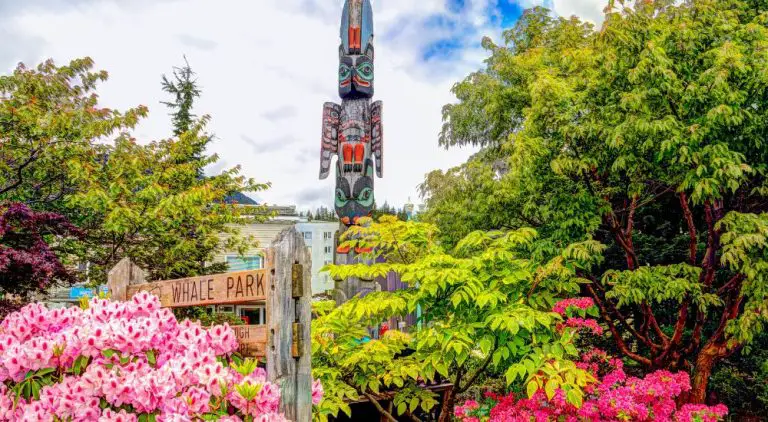What Months Are Dark in Alaska: A Guide to Alaska’s Polar Nights
Alaska, known for its vast wilderness and stunning natural beauty, is also known for its long and dark winters. For those who live in Alaska, the amount of daylight they receive varies depending on their location within the state. However, the darkest months are typically between November and late January.

During these months, some cities in Alaska see more light than others. For example, North of the Arctic Circle, locations such as Barrow may receive up to 67 days of total darkness in the year. However, it is important to note that the idea that Alaska gets 6 months straight of darkness is a myth. Only the most extreme poles of the earth have a full six months of darkness and six months of light, and no part of Alaska is north enough to experience this phenomenon.
Despite the darkness, Alaskans have found ways to cope during the long winter months. From embracing outdoor winter activities to celebrating the winter solstice, there are many ways to make the most of the darkness. In this article, we will explore the months of darkness in Alaska, the science behind it, and how Alaskans have learned to thrive during this time.
Understanding Alaska’s Unique Daylight Cycle

Alaska is known for its unique daylight cycle, which is characterized by long periods of 24-hour daylight and darkness. This phenomenon is caused by the state’s high latitude location, which is close to the Arctic Circle. In this section, we will explore the different aspects of Alaska’s daylight cycle, including the phenomenon of the Midnight Sun and Polar Night, and the variation of daylight across different regions of Alaska.
The Phenomenon of the Midnight Sun and Polar Night
During the summer months, Alaska experiences the phenomenon of the Midnight Sun, which is a period of 24-hour daylight. The northernmost city of Utqiaġvik (formerly known as Barrow) experiences this phenomenon for 82 days straight. This is because the sun remains above the horizon throughout the day, and there is no period of darkness.
Conversely, during the winter months, Alaska experiences the phenomenon of the Polar Night, which is a period of 24-hour darkness. The darkest months are typically between November and late January, and some cities in Alaska see more light than others during this period. North of the Arctic Circle, locations such as Barrow may receive up to 67 days of total darkness in the year.
Daylight Variation Across Alaskan Regions
The amount of daylight in Alaska varies depending on the location within the state, with some areas experiencing more daylight than others. For example, Anchorage, which is located in the southcentral region of Alaska, experiences around 5 hours of daylight during the shortest day in December. In contrast, Fairbanks, located in the interior region of Alaska, experiences only around 3 hours of daylight during the same period.
The southeast region of Alaska, which includes Juneau, experiences the least amount of daylight during the winter months, with only around 6 hours of daylight during the shortest day in December. The southwest region of Alaska, which includes Nome, experiences slightly more daylight during the winter months compared to the southeast region.
In conclusion, Alaska’s unique daylight cycle is a fascinating phenomenon that is influenced by its high latitude location. The amount of daylight and darkness varies across different regions of the state, and this can have a significant impact on the daily lives of its residents.
Cultural and Recreational Aspects of Alaskan Darkness

Living with Extremes: How Alaskans Adapt
Alaskans are well accustomed to living in a land of extremes. They are no strangers to the long, dark winters and the extended periods of sunlight during summer months. The transition seasons of spring and fall are also unique in Alaska, with unpredictable weather patterns and rapidly changing daylight hours.
Climatologist Brian Brettschneider explains that the darkness in Alaska is not as severe as many people believe. Although some areas of the state experience complete darkness for a few months, most regions still receive some sunlight during the winter months. Alaskans adapt to the darkness by using blackout curtains, taking vitamin D supplements, and consuming produce that is rich in this essential nutrient.
Tourism and Activities During Dark Months
Despite the darkness, visitors to Alaska can still enjoy a variety of outdoor activities during the winter months. Aurora viewing is a popular tourist attraction, with many visitors traveling to Alaska to experience the beauty of the Northern Lights. Dog sledding, snowmobiling, and skiing are also popular outdoor activities that can be enjoyed during the winter months.
Ketchikan, a city in southern Alaska, is known for its mild climate and relatively short winter days. Visitors to Ketchikan can enjoy a variety of outdoor activities, including hiking, fishing, and wildlife viewing.
The Mendenhall Glacier, located near Juneau, is a popular destination for tourists year-round. During the winter months, visitors can take part in guided tours and hikes to explore the glacier and its surrounding wilderness.
Alaskans and visitors alike embrace the darkness as an opportunity to engage in unique cultural and recreational activities. Whether it’s watching the Northern Lights dance across the sky or taking part in outdoor adventures, there is no shortage of things to do during the dark months in Alaska.
Frequently Asked Questions

When is it dark all day in Alaska?
North of the Arctic Circle, some areas of Alaska experience periods of complete darkness, also known as polar night, during the winter months. The exact duration of this period varies depending on the specific location. For example, in Barrow, Alaska, the sun sets on November 18th and does not rise again until January 23rd, resulting in a period of total darkness that lasts for approximately 67 days.
What is the darkest month of the year in Alaska?
The darkest month of the year in Alaska is typically December. During this month, the amount of daylight varies depending on the location. In Anchorage, the largest city in Alaska, the sun rises around 10:00 am and sets around 4:00 pm in December. Other areas of the state may experience even fewer daylight hours.
How many days of darkness does Alaska experience annually?
The number of days of darkness that Alaska experiences annually varies depending on the location within the state. Some areas, such as Barrow, may experience up to 67 days of total darkness per year, while other areas may experience significantly fewer days of darkness.
During which months does Alaska have continuous daylight?
Some areas of Alaska, particularly those north of the Arctic Circle, experience periods of continuous daylight, also known as midnight sun, during the summer months of June and July. During this time, the sun may remain above the horizon for up to 24 hours a day.
How does the daylight vary by month in Alaska?
The amount of daylight in Alaska varies greatly depending on the month and location within the state. During the winter months, the amount of daylight decreases, with some areas experiencing periods of complete darkness. During the summer months, the amount of daylight increases, with some areas experiencing periods of continuous daylight.
What are the daylight hours like in Anchorage, Alaska during winter?
During the winter months in Anchorage, Alaska, the amount of daylight varies depending on the month. In December, the sun rises around 10:00 am and sets around 4:00 pm, resulting in approximately 6 hours of daylight. In January and February, the amount of daylight gradually increases, with the sun rising earlier and setting later each day.






